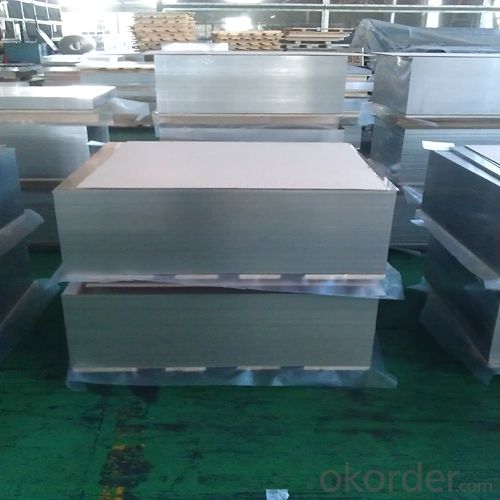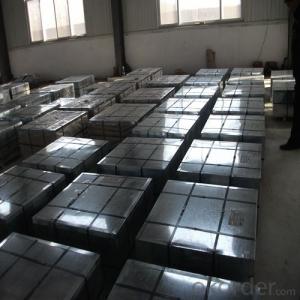Quality Electrolytic Tinplate Coils or Sheet For Tin Cans
- Loading Port:
- Tianjin
- Payment Terms:
- TT OR LC
- Min Order Qty:
- 25 m.t.
- Supply Capability:
- 12000 m.t./month
OKorder Service Pledge
OKorder Financial Service
You Might Also Like
Item specifice
1.Structure of Quality Electrolytic Tinplate Coils or Sheet For Tin Cans Description
The steel base of electrolytic tinplate provides the necessary strength and formability for can fabrication. The tin-iron alloy layer provides the bond between the steel and free tin layer. The free tin layer is not only responsible for the attractive bright finish and ease of solderability but is also non-toxic- a factor of vital importance in food packaging!
2.Main Features of the Quality Electrolytic Tinplate Coils or Sheet For Tin Cans
Appearance – Tinplate is characterized by its beautiful metallic luster. Products with various kinds of surface roughness are produced by selecting the surface finish of the substrate steel sheet.
Formability and strength – Tinplates have got very good formability and strength. By selecting a proper temper grade, appropriate formability is obtained for different applications as well as the required strength after forming.
Corrosion resistance – Tinplate has got good corrosion resistance. By selecting a proper coating weight, appropriate corrosion resistance is obtained against container contents. Coated items should meet 24 hour 5 % salt spray requirement.
Safe – Tinplate being low weight and high strength makes food cans easy to ship and transport.
Eco friendly – Tinplate offers 100 % recyclability.
Tin is not good for low temperature applications since it changes structure and loses adhesion when exposed to temperatures below – 40 deg C.
3.Quality Electrolytic Tinplate Coils or Sheet For Tin Cans Images


4.Quality Electrolytic Tinplate Coils or Sheet For Tin Cans Specification
Specification of :
Standard: ISO 11949 -1995, GB/T2520-2000,JIS G3303,ASTM A623, BS EN 10202
Material: MR,SPCC
Thickness:0.15mm - 0.50mm
Width: 600mm -1150mm
Temper: T1-T5
Annealing: BA & CA
Coil Inner Diameter: 508mm
Weight: 6-10 tons/coil 1~1.7 tons/sheets bundle
Passivation:311
Oil: DOS
Surface: Finish,bright,stone,matte,silver
5.FAQ of Quality Electrolytic Tinplate Coils or Sheet For Tin Cans
- What is tinning and how does it work?
Tinning is the process of thinly coating sheets of wrought iron or steel with tin, and the resulting product is known as tinplate. It is most often used to prevent rust.
- Do you only have prime quality tinplate?
We can supply both prime and second quality tinplate.
- Q:How does tinplate handle exposure to gases and odors?
- Tinplate is known for its excellent resistance to gases and odors. It acts as a protective barrier, preventing the transmission of gases and odors into the contents it contains. This makes tinplate an ideal choice for packaging solutions, ensuring the integrity and quality of the products inside.
- Q:How to test the tightness of tin metal cans?
- The empty tank which has been cleaned can be dried by 35, and the pressure or pressure leak test shall be carried out according to the equipment condition of each unit. B.1 pressure leak test, the empty tank will be carefully injected into the water until eight or nine into full, the rubber ring will be placed in the appropriate plexiglass plate at the opening side of the roll, so that it can be sealed. Start the vacuum pump, turn off the bleeder valve, hold down the cover by hand, control the pumping, and make the vacuum gauge rise from 0Pa to 6.8X10 PA (510mmHg) for more than 1min, and keep the vacuum above 1min.
- Q:What are the advantages of using tinplate in packaging?
- Tinplate offers several advantages in packaging. Firstly, it provides excellent protection against corrosion, ensuring the contents remain safe and unaffected. Additionally, tinplate is lightweight yet durable, making it easy to transport and handle without compromising strength. It is also highly malleable, allowing for intricate designs and shapes, enhancing visual appeal. Furthermore, tinplate is eco-friendly as it is recyclable and can be reused multiple times, promoting sustainability in packaging solutions.
- Q:How is tinplate coated for promotional items?
- Tinplate is typically coated for promotional items using a process called electrolytic tin plating. This involves immersing the tinplate into an electrolyte solution and passing an electric current through it, causing tin ions to be deposited onto the surface of the metal. This coating provides a protective barrier against corrosion and enhances the appearance of the tinplate, making it suitable for various promotional items.
- Q:What are the different types of tinplate closures available?
- Some of the different types of tinplate closures available include twist-off caps, lug caps, crown caps, and press-on caps.
- Q:What are the typical finishing options for tinplate products?
- The typical finishing options for tinplate products include printing, embossing, lacquering, and coating.
- Q:What are the common defects in tinplate?
- Some common defects in tinplate include surface scratches, pinholes, tin coating irregularities, and tin adhesion issues. Other defects may include dents, corrosion, and buckles in the tinplate.
- Q:Can tinplate be used for decorative purposes?
- Yes, tinplate can be used for decorative purposes. Its smooth and reflective surface makes it suitable for various decorative applications, such as cans, containers, signs, ornaments, and packaging materials. Additionally, tinplate can be easily printed, embossed, or engraved, allowing for customization and artistic designs.
- Q:What are the main differences between tinplate and tinplate laminates in terms of shelf life?
- Tinplate has a longer shelf life compared to tinplate laminates. Tinplate is made of a single layer of tin coating on steel, providing excellent corrosion resistance and protection against oxygen and moisture. Tinplate laminates, on the other hand, consist of multiple layers, with a thin layer of tin on top of a substrate material such as plastic or paper. While laminates can offer additional features like flexibility and printability, they may have a shorter shelf life due to the potential for delamination or degradation of the substrate material.
- Q:How is tinplate stored?
- Tinplate is typically stored in a dry, well-ventilated area to prevent moisture and humidity from causing corrosion. It is advisable to stack the tinplate sheets or rolls on pallets or shelves, ensuring they are kept away from direct contact with the ground to avoid damage. Additionally, it is important to protect the tinplate from any potential sources of scratching or denting during storage.
1. Manufacturer Overview |
|
|---|---|
| Location | |
| Year Established | |
| Annual Output Value | |
| Main Markets | |
| Company Certifications | |
2. Manufacturer Certificates |
|
|---|---|
| a) Certification Name | |
| Range | |
| Reference | |
| Validity Period | |
3. Manufacturer Capability |
|
|---|---|
| a)Trade Capacity | |
| Nearest Port | |
| Export Percentage | |
| No.of Employees in Trade Department | |
| Language Spoken: | |
| b)Factory Information | |
| Factory Size: | |
| No. of Production Lines | |
| Contract Manufacturing | |
| Product Price Range | |
Send your message to us
Quality Electrolytic Tinplate Coils or Sheet For Tin Cans
- Loading Port:
- Tianjin
- Payment Terms:
- TT OR LC
- Min Order Qty:
- 25 m.t.
- Supply Capability:
- 12000 m.t./month
OKorder Service Pledge
OKorder Financial Service
Similar products
New products
Hot products
Hot Searches
Related keywords




























